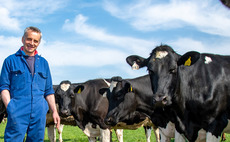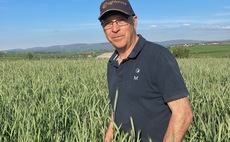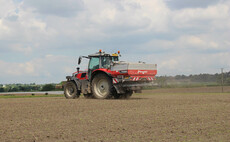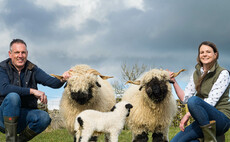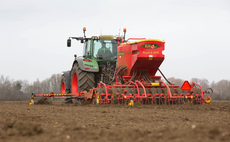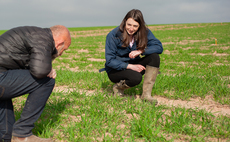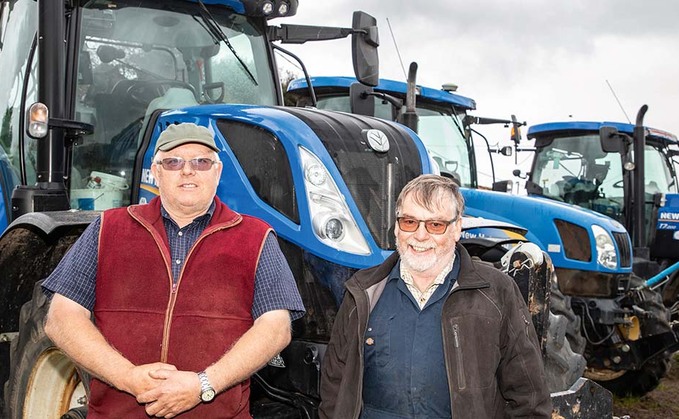
Featuring IsoBus control, auto-start/stop and half-width shut-off, KRM's latest Ares-P Soladrill offers a useful level of technology to improve seeding efficiency.
Geoff Ashcroft visited an Essex grower to find out how it has performed.
For A. and W. Bentall, seed placement depth and germination is a key element of cereal crop establishment.
And when the time came to replace its 10-year-old, six-metre Weaving drill, it looked closely at tine configuration and tine profile to find a drill which moved less soil.
Pendril Bentall, who farms 360-hectare Wick farm at Great Wakering, near Southend-on-Sea, with his son James, says: "We have been gradually moving away from the plough, and putting more effort into min-till.
"The majority of land is prepared using a Simba DTX350 pulled by a Challenger MT765 crawler.
"This gives us the option of deep cultivations ahead of potatoes or shallow cultivations to prepare for cereals. After the DTX, we now have the option of a five-metre Weaving short disc harrow or a second pass with the DTX, before crumbling the top layer with a 6m Maschio folding power harrow and then following with the drill."
The farm still has a need for a plough, a five-furrow Kverneland, but used on a rotational basis as a reset button to keep black-grass under control.
"We have improved our timeliness, and can flush more weeds and volunteers with a stale seedbed, before going in with the drill," Mr Bentall says.
"But where we had been making better seedbeds, crop establishment had not kept up."
He had identified areas where the spring-tine equipped Weaving had been causing concern in some of the heavier fields, where uneven sowing depth and seed bunching could sometimes occur.
"Our crops would eventually fill in, but you could see instances of gradual emergence over several days, rather than the whole field going green more or less immediately the crop emerged," he says.
"We just needed a better seeding solution to keep pace with our mintill system."
The Bentalls had not ruled out another Weaving drill, and a Sabre Tine drill was on their wishlist. But a visit to their local dealer's event, the Doe show, saw them come face-to-face with a 6m version of KRM's Ares-P Soladrill, equipped with a number of key improvements.
"The KRM's tines were just what we had in mind," he says.
"Angled slightly backwards, they were less aggressive than the Weaving and looked like they would rake the soil, not dig into it. We really wanted to move less soil and plant more accurately."
For A. and W. Bentall, it was an opportunity to future-proof its seeding operation, as operator Geoff Streeter explains.
"With the KRM drill, we now have the option of moving into variable rate seeding and this would complete the data link back to our New Holland combine's yield mapping," he says.
"We are some way off taking that step, though."
In the short-term, Mr Streeter says creating boundary maps for each field has enabled them to make full use of the drill's auto start-stop feature.
"We have cut down on headland overlaps by a considerable amount," he says.
"And with spring barley, this capability will be really noticeable at harvest, where we could suffer from crop lodging where we had seed overlaps on headlands."
And it is a similar thought process with the drill's half-width shut-off.
"Our previous drill sowed 6m, that was it," he says.
"Now I have the option of choosing which half to shut-off, depending on which way I am travelling. And with field sizes ranging from 1ha to 25ha, there is no doubt this will give us a huge improvement with our overlaps, and this is a feature that will help in a number of areas."
However, the Ares-P had a false start on-farm in spring, with A. and W. Bentall missing the opportunity to sow its spring beans with the new drill.
"We had to borrow our Weaving back, but just to begin with," says Mr Streeter.
"And a compatibility issue with IsoBus and connectivity was an initial stumbling block with our New Holland T7.190 drilling tractor.
"But to be fair to KRM and Doe, we have been well looked after and have since sown our entire 52ha of spring barley using the new drill."
Choosing hydraulic drive instead of a mechanical pto lets Mr Streeter operate at lower revs, saving fuel, while RTK guidance and autosteering lets the farm make the most of working widths.
At a forward speed of 9kph, he says outputs of about 4ha/hour are comfortable and, in the short-term, he has been running bout markers in combination with GPS guidance as an insurance policy, while getting to know the new system.
Michelin Xeobib 650/60 R38 tyres are also used to spread the weight of the T7 and fully mounted drill, making it easier for the wheel-track eradicators to remove wheelings, while pre-emergence markers simplify spraying operations on 24m tramlines.
Both Mr Streeter and Mr Bentall agree that the farm's spring-sown barley crop is looking good.
"It came up really evenly and the seeds could be found where you expected them to be - which is a testament to the drill's consistent drilling depth," says Mr Streeter.
Handy
"I also have the option to increase or decrease the seed rate while on the move, through the control box.
"It will be handy with those pockets of land where I know we should consider adding a little more seed."
But what the drill has done is highlighted an area where the Bentalls need to tweak their cultivations processes.
"There was a block of winter wheat land, which we did not get drilled last autumn because of the weather, but it had been cultivated using the DTX and then left over winter," he says.
"This was sprayed off, then power harrowed and drilled. It has proved to be a much nicer, finer seedbed than those that were cultivated in spring immediately ahead of the drill."
Such an accidental experiment has proved that the farm will be reviewing its cultivation timing.
"I am convinced we will resist leaving over-wintered stubbles and perhaps cultivate during winter to let Mother Nature do some of the work for us," explains Mr Streeter.
"If we can get a better seedbed, with less effort, we will give seeds a much better start."
The farm grows a range of combinable crops including winter wheat, winter barley, spring beans and spring barley.
In addition, onions and potatoes are included in the rotation and a herd of 50 sucker cows and calves provides a much-needed supply of farmyard manure to make the most of barley straw.
"There is no doubt that our ground is improving, and with a range of soils from grade one through to heavy brickworks clay, we face considerable challenges to make the most of our soil structure," says Mr Bentall.
"When we first started with the DTX, the Challenger knew it was there. Now, it pulls much easier, and we are looking at a long-term strategy to get plenty of muck and organic matter into the ground."
"We know that during the autumn, after we have lifted our daily requirement of potatoes, we can go drilling without having to worry too much about whether or not we are putting seed in the right places."
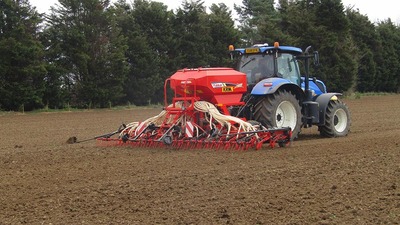
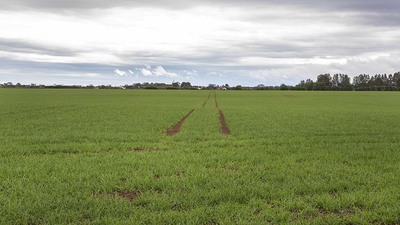
Verdict
A simple drill that sows into soils and conditions where tine coulters give the best or most economical results without resorting to a lot of electronics tech.

















